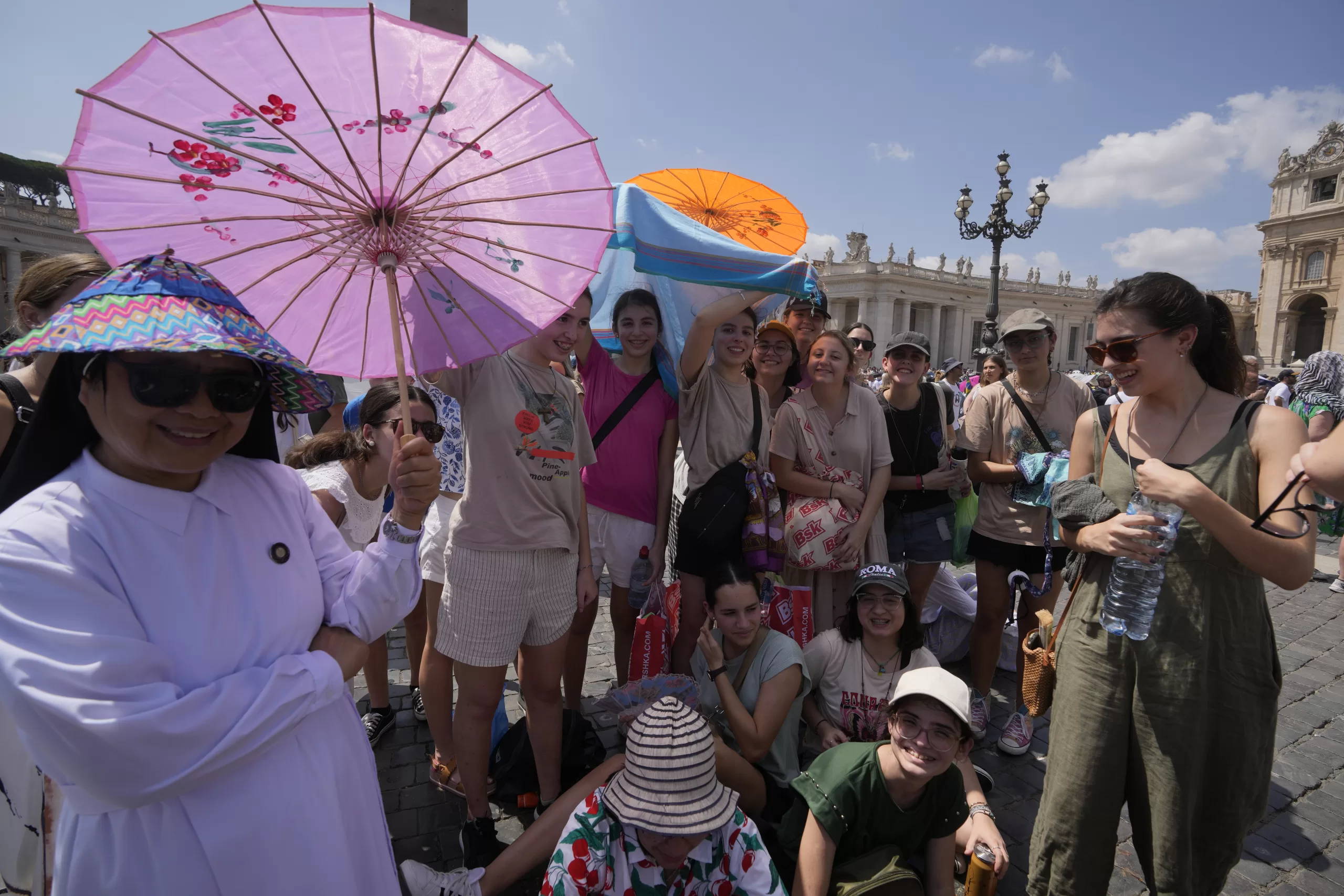
Europe is grappling with extreme weather from soaring temperatures in southern Italy to powerful storms in Croatia and Italy, piling pressure on emergency services and residents, and challenging tourists seeking some summer recuperation.
Temperatures have consistently topped 40 degrees Celsius this week across southern and eastern European countries, and for some areas like Sicily there remains no respite. The Italian island was baking in 46 degrees Celsius on Saturday, according to the Met Office, with night temperatures of 29 degrees offering little in the way of comfort.
The heat in parts of Greece was also pushing the mercury into the 40s on Saturday; the island of Kefalonia and the western coast of the mainland are continuing to see 40 degrees Celsius.
On the island of Rhodes, firefighters continued their battle to bring difficult wildfires under control, according to local media reports. Thousands of people have been evacuated from homes and hotels after fires engulfed large parts of the island, and Greece’s fire service warned that the situation could worsen due to weather, the BBC reported. More than 19,000 people have been evacuated by land and sea, the AP said.
In Malta, residents have been forced to sleep outside and in cars with the air con running, after a sixth day of power cuts left people without refrigeration, fans or cooling systems. Residents described it as a “summer of hell,” reported the Times of Malta.
The European Commission’s Emergency Response Coordination Center (ERCC) said on Saturday that high-temperature red alerts continue to be in place over southern Italy, south-western Croatia and western Serbia.
Climate change
Europe is not alone. This year has seen both the hottest June on record globally and the hottest ever day, recorded on July 6. The global average temperature was 17.08 degrees Celsius on that day, according to EU climate monitoring service Copernicus.
“Humans are 100 percent behind the upward trend,” said climate scientist Friederike Otto from Imperial College London. These increasingly warm global average temperatures are exactly what forecasts have shown would happen in a world with increasing levels of the greenhouse gases such as carbon dioxide, she told the BBC.
Health professionals are urging people to take measures to avoid over-heating, such as staying in cool areas at peak times of the day, drinking plenty of water and checking on vulnerable neighbors.
“The climate crisis is now one of the major factors determining human health outcomes,” a spokesperson for the European Commission’s health directorate DG SANTE told POLITICO, adding that “heat waves can cause considerable stress on health.”
Those most at risk include older people, those with chronic conditions such as cardiovascular disease and people who work outdoors, such as in construction, agriculture. DG SANTE urged people to follow the World Health Organization guidelines during heatwaves.
Some holidaymakers are already changing their summer habits to avoid the heat. Mediterranean destinations have seen a 10 percent drop in visitors aiming to travel there from last year, according to the European Travel Commission.
Meanwhile, destinations like the Czech Republic, Bulgaria, Ireland, and Denmark are experiencing a surge in popularity. “This can be attributed to travellers seeking out less crowded destinations, and milder temperatures,” the ETC said.
Deadly storms
On top of the soaring heat, other extreme weather events have been hitting Europe.
Just days after parts of Croatia received a red alert for heat and the country faced one of the worst storms in recent history, high winds and torrential rain pounded much of the country, killing four people, two in the area of Zagreb, and causing damage to critical infrastructure and homes across 14 counties. Over 100 people have been injured and 2,000 buildings damaged in the country, reported the ERCC.
The Croatian government is facing calls to answer why early warning text messages were not issued via SRUUK — the country’s early warning and crisis management system — to alert people to the impending storm and encourage them to take precautionary measures.
While Damir Trut, director of the Directorate of Civil Protection, said texts were not issued because it was only an orange alert; the State Hydrometeorological Association (DHMZ) denied this, saying the warning was raised to the highest red alert after 3 p.m. on July 19, reported Total Croatia. Interior Minister Davor Bozinovic told Index that the system was not working properly.
Parts of northern Italy have also faced torrential rain, hail stones the size of tennis balls and flash floods. Thunder storms have caused electrical damage and set a house on fire, reported Repubblica, while strong winds have uprooted trees and de-roofed properties.
The storms began Thursday evening and are forecast to continue through Saturday, with an orange alert issued by Lombardy Region’s Risk Monitoring Functional Center.
Elsewhere, severe storms have also caused the death of one person in Bled Town, Slovenia, where at least three people were also severely injured. More than 300 people were evacuated and 1,000 buildings damaged.
Another person died in Bosnia, and more than 20 people have been injured. And in Serbia, 20 people were evacuated, according to the ERCC.
The center also issued a warning of flooding on the Slovenian river of Pesnica, in Gocova, in the northeast of the country.
This article has been updated.
